
IN THE BACKYARD : Philadelphia late-August
Aug 31, 2020 | by Adrian Binns
It’s the end of summer, and birds are done nesting in my suburban-Philadelphia backyard. Gape-mouthed fledglings have been replaced by a sometimes-motley assortment of birds whose patterns, colors, and textures catch the eye for various reasons.
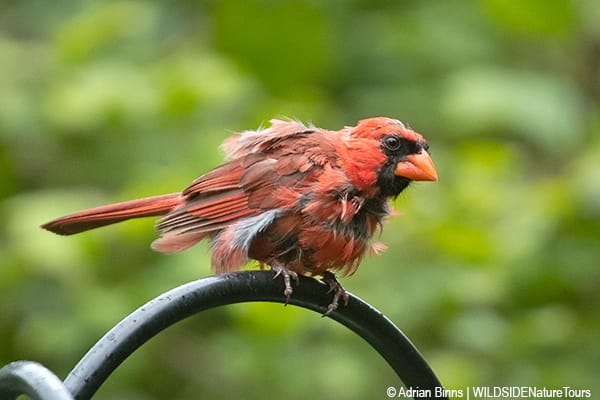
Northern Cardinal
There is nothing wrong with this Northern Cardinal – it’s just molting! (And is one of the scruffiest-looking that I have ever seen). Many birds molt once a year and post-breeding is the most common time for this to occur. Molting generally lasts about two weeks for backyard birds, during which most feathers are replaced by a new one. However, this particular male has looked scruffy for most of the summer. For whatever reason, this bird may have started shedding old feathers, but new ones did not grow in promptly. His prolonged molting didn’t seem to impede his ability to feed it’s offspring, or zip around the backyard!
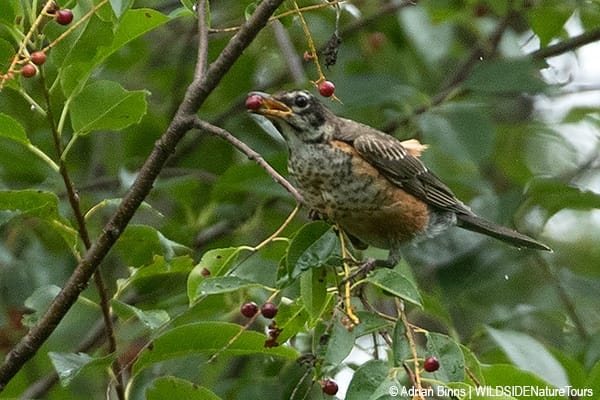
American Robin
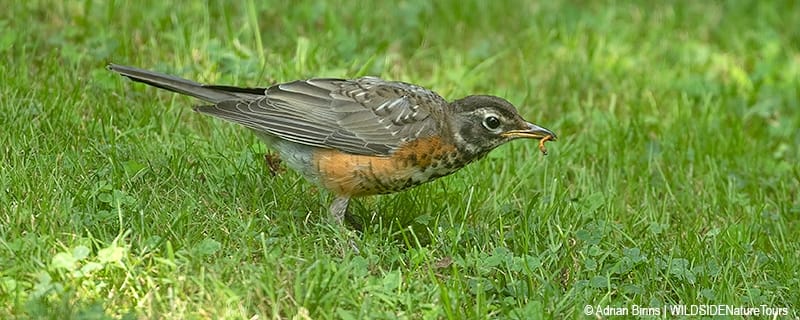
American Robin
Many of the American Robins in my yard feature boldly-spotted breasts. These are juveniles feasting on plentiful fruit from the Wild Cherry tree, and worms pulled from the ground. They hop and chirp in noisy groups, stretching to reach berries, or scouring the grass listening for creatures just below the surface.
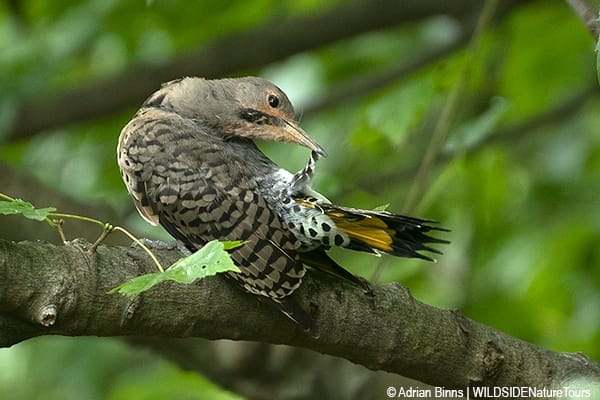
Northern Flicker
A young Northern Flicker appears each day in my backyard. It’s earth-tone textures are beautiful, but the colors are brown and muted, without the bold red nape of an adult bird. I can see the yellow shafts under the wings and tail, when it’s preening, or the sun hits just right.
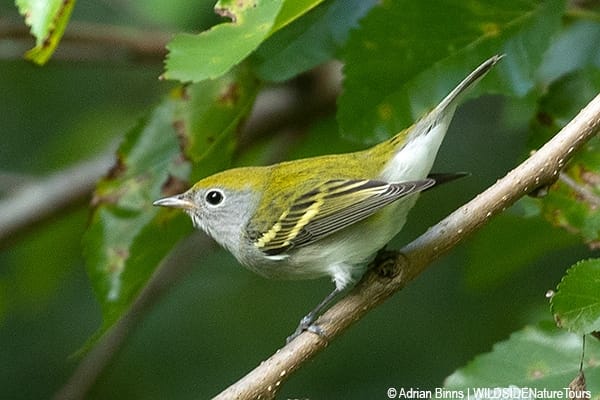
Chestnut-sided Warbler
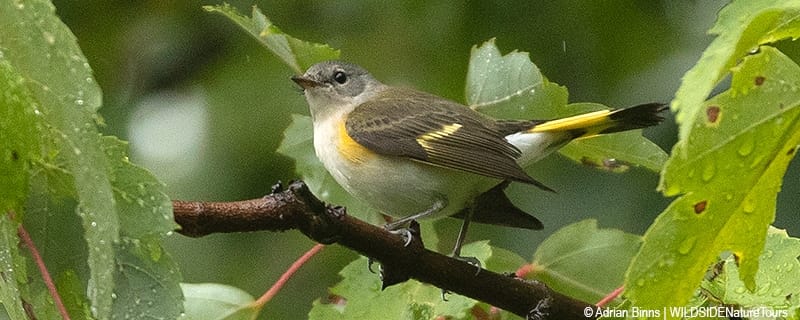
American Redstart
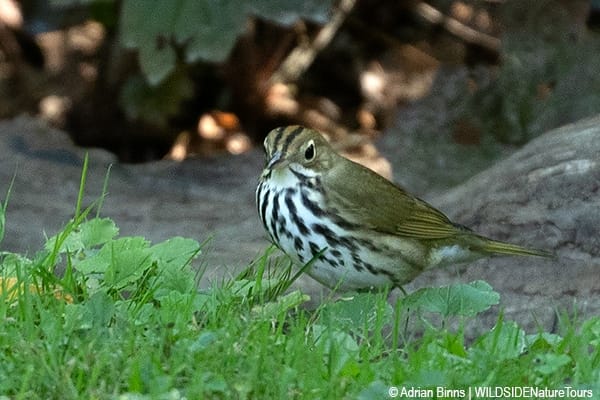
Ovenbird
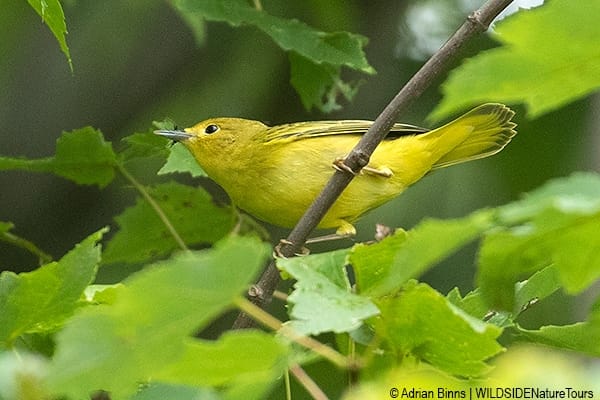
Yellow Warbler
Around the third week of August, migrants began moving through my backyard trees. It seems like just yesterday – but it was 3-4 months ago – that they visited on the way to their breeding grounds. They have finished nesting, and are winging their way south for the winter, following age-old instincts in pursuit of food. After favorable overnight winds, I saw Blue-Gray Gnatcatcher, Ovenbird, American Redstart, and Chestnut-sided, Yellow, Black-and-white, Black-throated Blue and Magnolia Warblers, most being females of various ages.
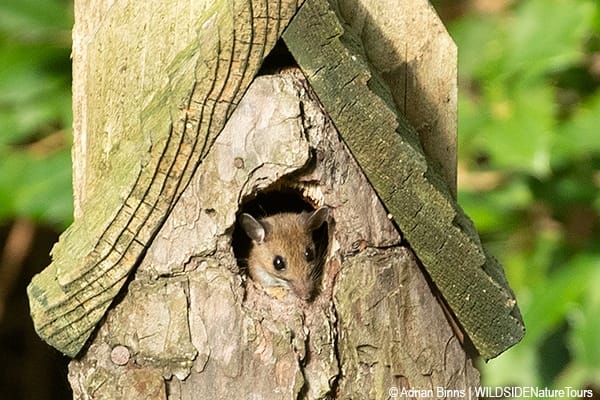
White-footed Deer-Mouse
With birds departed from their nesting cavities, this enterprising White-footed Deer Mouse has taken up residence in the House Wren box. It’s fun to see him/her peek it’s head out the hole around dusk each night!
I’m ending August with an unscientific observation on science. In a recent blog I called attention to National Left-handed Day, talking about species preference for left (or right) “handed” dominance. Well, my anecdotal survey showed that robins seem to cock their heads equally in both directions, listening for worms. Does this make them ambidextrous?
updated Aug 15-31, 2020
































